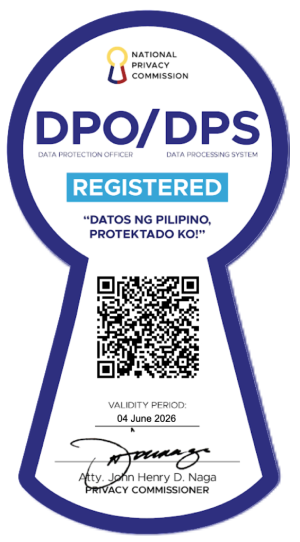
The global demand for tech talent is growing, but budgets are tightening—and finding skilled professionals in costly markets has become a major challenge. Enter IT staff augmentation: a strategic way to bridge talent shortages while optimizing costs from day one.
For companies navigating rapid growth or digital transformation, IT staff augmentation offers a flexible, scalable solution that aligns talent strategy with business goals.
This blog explores how savvy leaders can leverage outsourcing to hire top IT talent and save money, offering clear guidance for CTOs, CIOs, and startup founders ready to scale their teams smartly.
The Global IT Talent Shortage Is Forcing Businesses to Think Beyond Local Hiring
Across major tech hubs in the U.S. and Europe, competition for roles like DevOps engineers, cybersecurity experts, and data scientists has reached new heights. Companies offering high salaries and perks are vying for the same limited pool. At this pace, ease of hiring isn’t guaranteed—many skilled candidates are already tied to long-term commitments or demanding roles.
For businesses trying to surpass this bottleneck, in‑house hiring often proves slow and expensive. Every role filled locally requires compensation for benefits, training time, and sometimes relocation incentives. Even worse, when salaries escalate in competitive markets, expanding your team might mean compromising on budget or quality.
That’s why IT staff augmentation and other outsourcing models have shifted from cost-cutting tactics to strategic hiring solutions. They empower businesses to access niche expertise right when it’s needed—without the overhead of full-time, on-site staff.
Why Outsourcing Is a Smart Way To Access Top Tech Talent

When you work with professional overseas providers, you tap into global talent pools that are pre-vetted and ready to deliver. Firms specializing in offshore IT outsourcing maintain talent pipelines across regions like the Philippines, Eastern Europe, Latin America, and Southeast Asia.
This model gives you two key advantages. First, you gain niche skills—whether it’s Kubernetes, blockchain integration, or AI algorithms—without committing to long-term payroll on your balance sheet. Second, IT staff augmentation offers flexibility: scale your engineers up in a week, not months, and scale down when sprint cycles end or priorities shift.
Choosing to work with reputable IT outsourcing companies means you don’t just outsource tasks—you align with teams who become extensions of your company. Expertise comes with infrastructure support, communication management, and quality control baked in.
Choosing Between Project‑Based, Dedicated, and Staff Augmentation Models
Outsourcing isn’t one-size-fits-all, so it’s vital to know which model aligns with your goals.
If you need a one‑off mobile app or website, a project‑based model gives you clear deliverables and timelines. But for ongoing development or long roadmaps, dedicated teams offer continuity. They deeply understand your product more than generic freelancers could.
Then there’s IT staff augmentation—a powerful hybrid. Here, you integrate external developers directly into your existing workflows, under your project management. You keep technical leadership in‑house while bringing in precisely what’s needed, when it’s needed.
Each model balances cost, timeline, and control differently. Project-based offers cost predictability but less flexibility. Dedicated teams grant cohesion but can lock you into larger monthly commitments. Staff augmentation gives you dynamic headcount control, often at lower incremental cost, but requires you to own leadership and coordination.
How To Vet an IT Outsourcing Provider for Skill, Culture Fit, and Quality
Once you know what model suits your objectives, the real work begins: finding the right outsourcing partner. They must feel like an extension of your team—not a separate vendor.
First, dig into their recruitment processes. Ask about how candidates are sourced, screened, and validated. Do they assess technical skills? Soft skills? English proficiency? How are technical interviews structured, and what standards do they enforce?
Then evaluate communication practices. Ask how teams handle time‑zone alignment: are overlapping working hours guaranteed? Which collaboration tools are used—Slack, Jira, Zoom? How will progress be reported and escalated when issues arise?
Cultural alignment is crucial. Are your teams both used to agile stand‑ups, or do they prefer waterfall? How do they handle feedback and code reviews? A slight misalignment in norms can erode effectiveness.
Finally, portability and security shouldn’t be afterthoughts. Review data‑handling policies, IP agreements, NDA standards, and cybersecurity measures. These elements matter as much as technical skill when scaling a remote IT team.
Cost Breakdown: What You Really Save With IT Outsourcing
Many companies underestimate the full cost of in‑house hiring. It’s not just the salary—it’s benefits, taxes, training time, office space, equipment, healthcare, and ongoing legal compliance. Not to mention the ramp time: new hires often take weeks or months to become fully productive.
In contrast, offshore IT outsourcing often eliminates those hidden overheads. Let’s compare: a mid‑level software engineer in Silicon Valley might earn a total compensation package north of $150,000 annually. Offshore counterparts, delivering the same output, can cost anywhere between 30 to 60 percent less.
When you use IT staff augmentation, you also avoid paying for idle hours. Instead of budgeting for a leave‑filled, full‑time employee, you pay for productive time on real tasks. Many providers even offer incentives for milestone delivery.
This combination—shrinking salary overhead, eliminating benefits burden, and paying only for output—translates into predictable, lower monthly cost for tech capabilities.
IT Outsourcing Boosts Time‑to‑Market and Innovation
One of the most overlooked benefits of IT staff augmentation lies in accelerated time‑to‑market. By aligning with remote teams, you can structure hand‑offs across time zones: your development pushes forward while your domestic team is offline, and vice‑versa.
For example, U.S. teams working with Philippine engineers effectively gain a round‑the‑clock dev cycle. That can slash sprint durations—or even halve development timelines—without increasing headcount domestically. Faster cycles mean faster feature launches, customer feedback loops, and product pivots.
And by tapping into specialized experts on demand—say a data analyst or security expert—you fuel innovation without chronic resource drain. You stay agile, experiment often, and iterate based on real user data, not assumptions.
Overcoming the Common Challenges of IT Outsourcing
Of course, remote collaboration isn’t without hurdles. But they’re manageable with the right playbook.
First, define clear KPIs and SLAs upfront: what constitutes success? On‑time delivery? Code quality scored by automated tests? Customer feedback? Clarity here avoids confusion later.
Use consistent communication—daily stand‑ups, code reviews, design sessions—and log every decision. This maintains alignment. Invest in performance‑tracking dashboards and frequent retrospectives to surface blockers early.
Cultural alignment helps cohesion. Build camaraderie with virtual team‑building sessions. Share onboarding docs about your brand values and organizational norms. Familiarity reduces friction.
And don’t forget local champions. Assign product owners and engineering leads onshore who can provide context, review work, and bridge time‑zones. Good leadership helps the external team feel embedded, not outsourced.
The Strategic Advantage of Partnering With a Full‑Service Outsourcing Firm
Building long‑term capability requires structure. A full‑service provider—like SuperStaff—does more than just provide talent.
They establish legal compliant contracts, payroll, benefits, tax and labor management. They manage equipment procurement, IT infrastructure, office facilities (if needed), and even career development paths for augmented staff. This removes administrative strain from your side.
This integrated support guarantees continued alignment as your business scales. Need ten more web engineers in three months? You don’t start hiring from scratch—you expand your existing augmented team.
That structure, backed by solid delivery processes and support, makes IT staff augmentation a cornerstone of strategic tech growth—that’s future‑proofing your operations without overcommitting on overhead.
Conclusion: IT Staff Augmentation With SuperStaff
IT outsourcing gives companies the ability to hire smarter, scale faster, and reduce costs—all without compromising quality. From accessing hard‑to‑find skills to cutting operational overhead, the right outsourcing strategy transforms how tech teams are built.
By leveraging cost transparency, skilled remote talent, and flexible headcount models, businesses gain market agility. With proper vetting, leadership alignment, and governance, many traditional concerns around remote teams become non-issues.
Ready to scale your tech capabilities while keeping costs in check? Let SuperStaff help you hire world‑class IT talent tailored to your needs—through proven IT staff augmentation solutions, full integration, and strategic partnership. Contact us today to get started.






